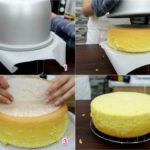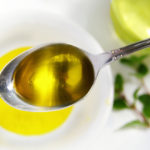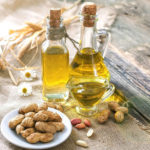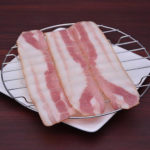Shortening is a versatile ingredient used extensively in the food industry, particularly in cooking and baking, and it’s an essential component for cake decoration. Let’s help you understand it better.
1 What is Shortening?
Shortening, also known as mutton tallow or suet, is a solid fat made from a blend of vegetable oil and pork fat. It has a high fat content, no water, and a white, glossy, smooth, and spongy appearance.
The process of making shortening involves hydrogenating vegetable oils, which is why it changes from a liquid to a solid state. It typically melts at a high temperature of 40-47 degrees Celsius, turning into a colorless, transparent liquid with a characteristic flavor.
 Explanation of shortening
Explanation of shortening
2 Uses of Shortening
Due to its high fat content, shortening produces a softer, flakier texture in baked goods, making cake crusts lighter and fluffier. Its high melting point helps maintain the structure of cakes, preventing them from collapsing.
Baked goods made with shortening tend to be sweeter and have a longer shelf life. Shortening can also be used as a substitute for butter or margarine in recipes or for decorating sponge cakes.

3 Can Shortening be Substituted?
Shortening and butter have similar fat contents, so they can be substituted for each other in recipes. When using shortening instead of butter, reduce the amount by about 18-20% to maintain the desired moisture and fat levels in your dishes.
However, frequent substitution between the two may affect the distinctive characteristics of certain dishes.
 Substituting shortening with butter
Substituting shortening with butter
4 How to Properly Whip Shortening
To decorate cakes with shortening, you need to know the correct whipping technique to achieve the desired consistency. We’ll guide you through two simple steps to whip shortening perfectly.
Here are the ingredients you’ll need:
- 900gr finely ground sugar
- 400gr shortening
- 80ml water
- Flavorings of your choice
- A pinch of salt and vanilla extract
 Whipping shortening
Whipping shortening
5 How to Store Shortening
Due to its high melting point, the best way to store shortening is at room temperature in a sealed container, in a cool and dry place. Avoid refrigerating it, as it will harden.
Shortening has a long shelf life of about two years from the manufacturing date. Once opened, it’s best to consume it within six months.
 Storing shortening
Storing shortening
6 Where to Buy Shortening
Shortening is readily available in supermarkets, specialty baking ingredient stores, and online e-commerce platforms.
The price of shortening typically ranges from 25,000 – 30,000 VND per 500 grams.
We hope this information has helped you understand the magical uses of shortening and how to utilize it effectively. Don’t forget to share your delicious creations made with shortening with us!
Tips on Selecting Healthy Cooking Oil and Safe Ways to Cook with It
A Taiwanese company has made a significant impact on the food industry through the recycling of over 700 tons of dirty oil, which has been exported to over 12 countries, including Vietnam. This has raised a few eyebrows among housewives, as cooking oil is an essential condiment in daily cooking. To ensure the safety and quality of their cooking oil, consumers should take note of the following advice.
Preparing Delicious Cakes with a Rice Cooker
 Cakes with a Rice Cooker’>
Cakes with a Rice Cooker’>Tempt your taste-buds with the exclusive recipe from Dien May XANH- sponge cake made with just five simple ingredients and a rice cooker! Learn how to make this delicious loaf now.


































